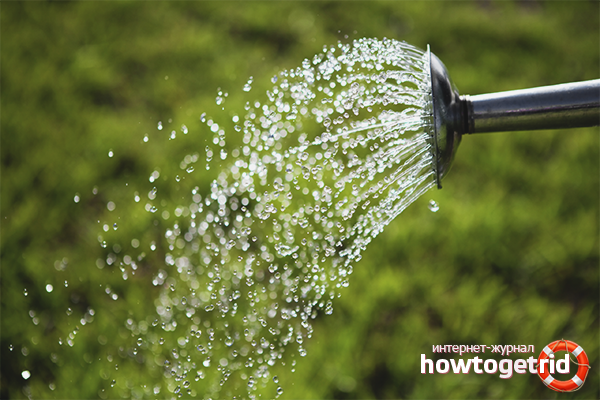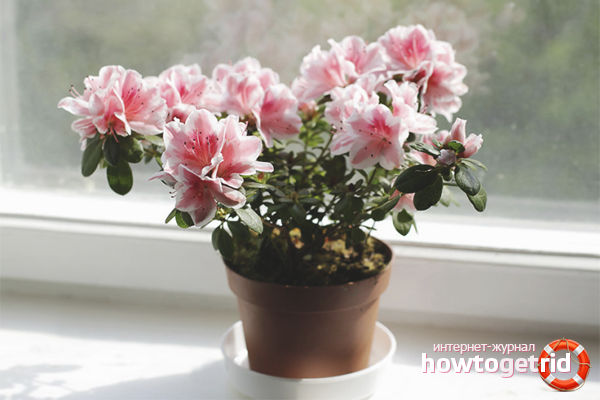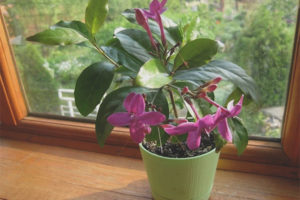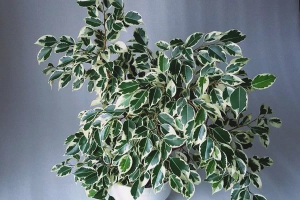The content of the article
Caring for azaleas is quite difficult even for experienced gardeners, let alone beginners. However, the effort is worth it! A capricious plant is striking in its variety of colors, grace and originality of forms, splendor of flowering. It’s hard to tear your eyes away from such beauty.
In order for this magnificent flower to continue to delight the eye with its flowering and not to wither, it is necessary to make every effort to maintain it in good condition. The undoubted advantage of azalea over other indoor plants is that its activity occurs in the cold season.
Shrub species
The birthplace of a luxurious evergreen plant is considered to be East Asia, the Caucasus and the mountainous regions of the Carpathians: areas with a mild climate and fertile soil. Such climatic conditions have a positive effect on the shrub, which with all desire cannot be called unpretentious, and contribute to its development.
Azalea, translated from Greek its name sounds like “dry”, is a plant that reaches a height of 40 centimeters to one and a half meters (depending on type). At rest, a nondescript shrub with rough, fine, and dry foliage. But when the azalea begins to bloom, its fabulously beautiful flowers visually resemble roses.
At home, it is customary to grow two types of azaleas: Indian and Japanese. Among gardeners, garden azalea is also very popular, the cultivation of which differs little from indoor varieties.
The Indian is more suited for keeping at home. Its height reaches 60 centimeters, the flowering time lasts two months: from December to February. Its flowers are larger than Japanese, but the latter can be used after flowering as a decorative evergreen shrub. Japanese azalea is not distinguished by the splendor of flowers, its advantage is a rich green crown.
Maintaining the desired temperature in the room
One of the important points for the successful functioning of the azalea is the corresponding room temperature.
Many flower growers lamentingly complain that immediately after the first flowering, the azalea dropped its leaves and withered. It is not surprising, because the bush does not tolerate heat or cold, these natural or artificially created phenomena are extremely dangerous for him. Therefore, choosing a place where the plant will be located, one should take into account the natural environment of its habitat. It should be cool places with clean air and diffused sunlight.
It is very important to maintain the required temperature in the room. The best temperature to stimulate the flowering of azaleas is considered to be from + 10 to + 15, but not more than + 18 degrees. From heating appliances, azalea should be placed as far as possible. The room needs to be ventilated more often - drafts for the plant are not terrible. Windows should face north, east or west.
In winter, for example, azalea can be moved to an insulated loggia, where it will be quite comfortable.
It is important to know the two most important points, this is the key to the successful development of the plant:
- The optimum temperature in the room during the formation of plant buds should be at least +5 degrees. When the azalea begins to bloom, the temperature will need to be gradually raised.
- If the room is too hot, experienced flower growers advise to lower the flower pot into cool water or cover with ice cubes.
Proper watering
Azalea was imported from countries with a humid climate, therefore, the land in which it grows should not be dry, the soil must be moistened. However, the plant should not swim in water, this will destroy it.
When watering, you must adhere to the following rules:
- The colder the room, the less often you should water the shrub and, conversely, the hotter, the more often it is recommended to irrigate the soil with water.
- If the earth is dry, the pot must be immersed in a basin of water for 2-3 hours. Watering azaleas is recommended to resume only after three days.
- Spraying and watering is done only with cold boiled water.
- In the hot summer period, you need to water it at least 2 times a day and systematically spray the leaves.
Never use plain tap water to irrigate azaleas! Use settled melt, rain and distilled.
When buds are laid, watering should be less common. A lack of water can cause the azalea to begin to lose foliage and turn yellow. Excess water is no less harmful to it, this is fraught with decay of the root system.
How to create the right lighting
Despite the fact that azalea loves warmth, it should be cautiously protected from bright sunlight, a room with diffused lighting is best for it. Otherwise, the leaves of a tender plant can get burns, this manifests itself in the form of dry twisted tips. If the room is small and you can put the pot with azalea only on the windowsill, the window of which faces south, then the shrub should be closed from hot sunlight using a plastic sheet with a matte surface. So in the room will be created twilight, which is so necessary capricious plant.
In the cold season, azalea, on the contrary, lacks light. Following the example of experienced gardeners, additional electric lights can be installed near the pot.
Room humidity
But what azalea loves is a humid environment that needs to be maintained indoors, although it's difficult. To do this, put the pot with shrubs in a large basin filled with cool water. Pour moss or pebbles into the pallet first.
If the air is too dry in the room, then the azalea leaves should be periodically sprayed with water using a spray bottle (at least twice a day). It is necessary to try so that the drops are very small, otherwise the plant will become covered with spots.
Fertilizer application
It is impossible to do without the use of special means for the care of azalea. With the onset of summer, the shrub is treated with nitrogen fertilizers, starting from August and ending with the flowering period, phosphorus and potash are used. Top dressing should be done once every two weeks, this process cannot be neglected, as the plant may die. When choosing a product, it is recommended to consult a specialist and follow the recommendations written on the fertilizer packaging exactly. The consequences of underdosing can be unpredictable, up to the death of the plant.
It is necessary to maintain the acidity level of the soil and water the azalea with a solution of citric acid (1 tsp in 2 l of water). Water should have a slightly sour taste.
It is advisable to use superphosphate as an additional nutrition. Fertilizers are best applied in the evening.
Azalea bloom
During this wonderful period, the azalea can be turned over and moved for convenience, but after that the pot with the plant must be returned to its original position and not touch the buds and flowers. Flowers that have bloomed must be removed immediately, otherwise the azaleas will have to spend energy on ripening the seeds. In faded azaleas, crown formation occurs.
When maintaining the correct temperature regime, flowering will last up to 2.5 months, if not, only up to 2 weeks.
If an already blooming azalea is acquired in a store, it should have several formed flowers.
After flowering
In order for a beautiful plant to continue to delight with beautiful lush flowers, it is necessary to carry out proper care at the end of the flowering period. An important point is the timely transplantation of shrubs into a new pot, first you need to remove faded flowers, young shoots, dry leaves and branches. Only soil intended for rhododendrons is used.
The cause of the transplant is an overgrown root system or decay of the substrate.
The transplant procedure should be done to a young plant once a year, for an adult - 3 times. The pot should be free, but not shallow, since the azalea belongs to surface plants. Loosening the soil is not recommended, so as not to damage the roots.
Reproduction occurs by the method of cuttings. Cuttings are harvested either in spring (March-April) or in summer (July-August). In both cases, the plant should be nipped last year.
Cuttings are harvested only from healthy plants and not more than 1 time per year. To do this, make a cut under the lower bud of a semi-lignified shoot 7-10 cm long. The lower leaves are cut completely, the upper leaves are cut in half. Cut the cuttings into a bundle and put in a solution of heteroauxin or root with a lower cut. Plant after 6 hours in a container with pre-prepared soil.
At room temperature after 2 months, the cuttings will give roots. When using special heating, this will happen in 20-25 days.
Once the cuttings are rooted, they should be transplanted into larger pots with coniferous soil and pinched after 2 months. This procedure is necessary for the formation of the bush. The first buds are better to remove, they prevent young azaleas from developing. Pinching and trimming should be done in a timely manner. Pruning is done immediately after flowering, when you need to cut off sprouting sprouted shoots and form a crown so that it does not become too spreading. Pinching helps stimulate flowering.
Azalea diseases
Not enough good care can provoke diseases of the bush. Violation of the temperature regime, untimely or excessive moisture, ill-chosen fertilizers and poor dosage during feeding are direct sources of health threatening delightful azaleas.
Azalea ailments are determined by the following symptoms. Timely intervention will help correct the situation:
- The leaves have faded and opal - a lack of watering or direct sunlight.
- The flowers turned yellow and opal - the use of bad water.
- The appearance of cobwebs, yellowness and falling buds - spider mite affection, the pest appears with insufficient moisture and watering. The shrub should be washed first with soap and then rinsed thoroughly with warm water.
- Young leaves take the form of a tube, many small buds are formed instead of 2-3 large, the flowers do not open, the plant either does not grow at all, or grows very slowly - the plant is attacked by a strawberry mite. It is very difficult to deal with it and is possible only with the help of special means from pests.
The azalea beauty is a very capricious plant, but with experienced care, it will thank its owner with a beautiful flowering.
Video: how to care for azalea














Submit